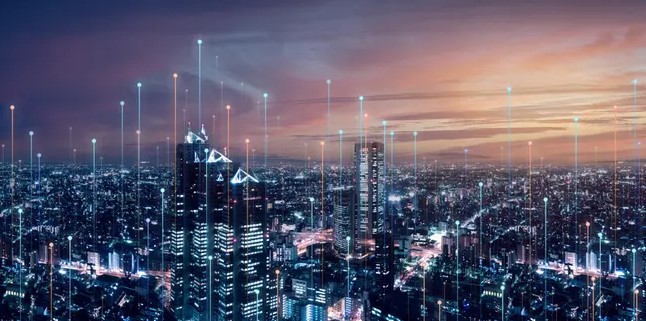4 Things You Need to Know Before You Select Your Next Smart Meter
Making an investment in technology is never easy. But when that technology is expected to last 15+ years, like smart meters, the stakes are much higher.

Investing in technology is never a simple decision—especially when that technology is expected to last for 15+ years, like smart meters. The stakes are high: the energy transition is happening now and will continue throughout the lifespan of the meters being installed today. It’s a critical choice. Choose the wrong technology, and you risk being left with outdated capabilities, unable to adapt to the evolving needs of the grid.
It’s a lesson that is still fresh in the minds of utility decision-makers after first-generation smart meters fell well short of their promises. While some incremental improvements have followed, next-generation meters are driving a real transformation. No longer just data collectors, these software-driven platforms are changing how we manage the grid in real time.
So, what makes a smart meter AMI 2.0? It comes down to four key capabilities:
- Data
- Computation, memory, and storage
- Networking
- Software and security
Here’s a closer look at each.

The first wave of smart meters introduced 15-minute interval data, but that wasn’t enough to deliver meaningful insights. Today’s energy systems require significantly higher resolution to track device-level consumption in homes and detect anomalies across the grid.
AMI 2.0 meters with embedded intelligence can now process 50 million times more data than the first generation of smart meters. This dramatic increase in data provides a detailed, real-time view of devices in the home (real-time load disaggregation), along with a comprehensive, real-time view of the entire distribution grid. By analyzing subtle variations in voltage and current waveforms, these advanced meters can detect and localize operational issues—like transformers arcing or vegetation brushing against power lines—before they cause outages or equipment damage.
To deliver these capabilities, AMI 2.0 meters should have:
- Continuous sampling of voltage and current waveforms at a minimum of 15,000 samples per second
- Raw energy data accessible to the application processor—not just summarized information
- Synchronous sampling of voltage and current
- Linear quantization with at least 16-bit resolution for current and 14-bit or greater resolution for voltage
Real-Time Data Matters
Think about Google Maps—you don’t want traffic updates from 30 minutes ago; you need them now. The same goes for energy data.
For consumers: Device feedback should appear in under a second. Delays of more than a second make it hard for users to connect their actions—like turning on a device—to what they see in an app.
For the grid: The definition of “real-time” varies by application. Planning and operations can often work with data that’s minutes old. But critical tasks like downed wire detection and cutoff require response times in the hundreds of milliseconds, and for grid services involving DERs, delays need to be no more than a few milliseconds.


With 50 million times more data, transmitting everything to a centralized cloud isn’t feasible. Instead, AMI 2.0 shifts intelligence to the edge, leveraging embedded processing for instant insights and operational efficiencies.
This shift is made possible by advancements in the mobile phone industry, which has dramatically increased computation capabilities and energy efficiency while driving down costs. Modern processors now include hardware accelerators capable of running AI models locally and processing high data rates in real time.
AMI 2.0 meters leverage these advanced processors through a distributed software model, where much of the processing happens locally on the meter—combined with networking and cloud-side processing where appropriate.
To deliver these capabilities, your AMI 2.0 meter should have:
- 1000 DMIPS CPU processing power
- 256MB RAM memory
- 1GB Flash storage or other storage

A distributed computing model reduces the strain on utility networks, but reliable connectivity remains essential. While many applications can function with modest bandwidth, others—like real-time DER coordination, voltage optimization, and outage detection—depend on rapid, low-latency communication.
To meet these demands, your AMI 2.0 meter should support:
- 30-100MB/day of non-real-time data transfer (from meter to cloud)
- Low-latency (<750ms round trip) for real-time applications requiring rapid control signals
- Local home network access (WiFi/Ethernet) to enable seamless smart home devices

The energy landscape is changing rapidly. So is technology. AI-driven analytics, grid-edge computing, and software-based automation will become the norm. To keep pace, smart meters need upgradable, adaptable software architectures.
To support modern software stacks—including machine learning and AI—your AMI 2.0 meter should provide:
- Secure over-the-air (OTA) software updates
- Native-level access to computational resources
- Multi-threading support
- Security to protect meter functions from consumer software and to provide data privacy for consumer data
With these capabilities, meters stay relevant and adaptable—ensuring your investment supports the grid’s future needs.
Final Takeaway: Future-Proof or Fall Behind
AMI 2.0 isn’t just an incremental upgrade—it’s a shift in how we manage energy. These advancements are built on proven, mature technologies.
Watch out for “good enough” or “near real-time” solutions that lack high-resolution data, robust edge computing, or scalable software. The meters you deploy today will define your utility’s capabilities for the next two decades—invest wisely to stay ahead of the curve.

